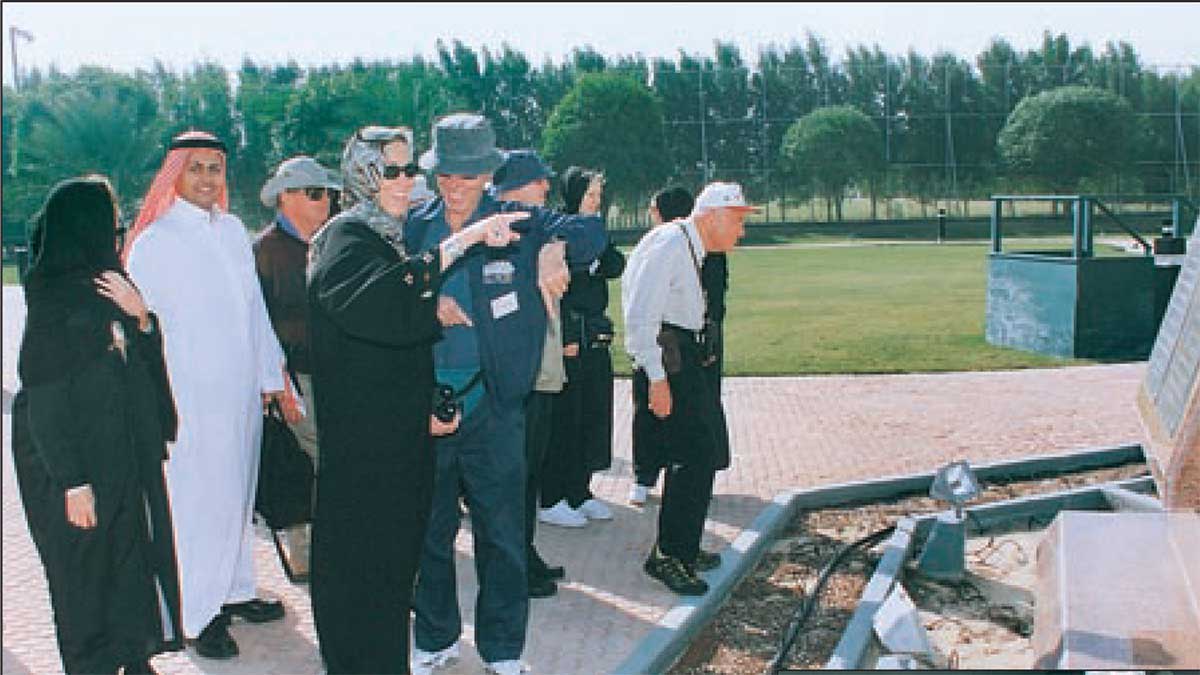This Day in History
This Day in History (2001): Dhahran takes flight as key tourist site

Global January 31, 2023
Stanford group checks out the founding place of Aramco and its rich history.
From the Jan. 31, 2001 edition of The Arabian Sun
They bounded down the steps of the bus with a jaunty step and an enthusiastic gleam in their eyes, lined up in front of the Saudi Aramco Exhibit and said "Stanford" instead of "cheese" as the photographer snapped their picture.
The group of 40 Stanford University alumni and family members would have been jet-lagged since they had arrived in the Kingdom from California only two days before. Instead they were full of questions and excited about all they were seeing and were going to go see.
The visitors, who traveled in the Kingdom for two weeks, represented a relatively new phenomenon in the country: international tourism. And the Saudi Aramco Exhibit has become a key stop for such travelers since the Kingdom officially opened up to tourism last year when HRH Amir Sultan ibn Salman ibn 'Abd al-'Aziz became secretary general of the new Supreme Commission of Tourism.
For the most part, tour groups have been affiliated with universities and museums and are composed of retired intrepid travelers.
The Stanford group has a particularly strong link with Saudi Aramco. It was 1921 Stanford graduate Max Steineke who, as chief geologist, spearheaded the drive to complete Prosperity Well Dammam No. 7 -- the oil strike in 1938 that signaled the Kingdom's entry into the oil era.
Also on this date
2020 — The United Kingdom's membership in the European Union ceases after 47 years of being a member state
2001 — In the Netherlands, a Scottish court convicts Libyan Abdelbaset al-Megrahi and acquits another Libyan citizen for their part in the bombing of Pan Am Flight 103 over Lockerbie, Scotland
1988 — Doug Williams becomes the first African-American to lead his team to the Super Bowl. Washington goes on to win the game.
1971 — Apollo 14 astronauts Alan Shepard, Stuart Roosa, and Edgar Mitchell lift off for a mission to the moon aboard Saturn V
1968 — Nauru gains independence from Australia
1961 — The chimpanzee Ham travels into outer space aboard the Mercury-Redstone 2
1950 — U.S. President Harry S Truman orders the development of thermonuclear weapons
1945 — U.S. Army private Eddie Slovik is executed for desertion, the first such execution since the Civil War
1937 — Composer Philip Glass is born in Baltimore, Maryland, in the U.S.
1928 — Leon Trotsky is exiled to Alma-Ata
1915 — Germany is the first to make large-scale use of poison gas in warfare in the Battle Bolimow against Russia
1862 — Alvan Graham Clark discovers the white dwarf star Sirius B, a companion of Sirius, through an 18.5 inch telescope now located at Northwestern University
1606 — Four of the conspirators in the Gunpowder plot, including Guy Fawkes, are executed for treason by hanging, drawing and quartering, for plotting against Parliament and King James
1435 — Zhu Hanji, the fifth Emperor of the Ming dynasty, dies, effectively ending what many consider the height of the dynasty's golden age






